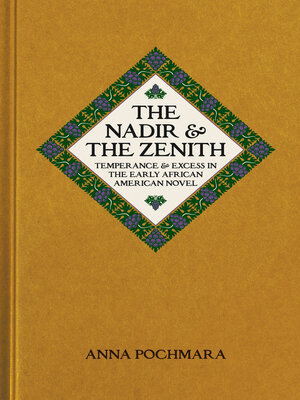The Nadir and the Zenith
ebook ∣ Temperance and Excess in the Early African American Novel
By Anna Pochmara

Sign up to save your library
With an OverDrive account, you can save your favorite libraries for at-a-glance information about availability. Find out more about OverDrive accounts.
Find this title in Libby, the library reading app by OverDrive.



Search for a digital library with this title
Title found at these libraries:
| Library Name | Distance |
|---|---|
| Loading... |
The Nadir and the Zenith is a study of temperance and melodramatic excess in African American fiction before the Harlem Renaissance. Anna Pochmara combines formal analysis with attention to the historical context, which, in addition to postbellum race relations in the United States, includes white and black temperance movements and their discourses. Despite its proliferation and popularity at the time, African American fiction between Reconstruction and World War I has not attracted nearly as much scholarly attention as the Harlem Renaissance. Pochmara provocatively suggests that the historical moment when black people's "status in American society" reached its lowest point— what historian Rayford Logan called the "Nadir"—coincides with the zenith of black novelistic productivity before World War II.
Pochmara examines authors such as William Wells Brown, Charles W. Chesnutt, Paul Laurence Dunbar, Frances Ellen Watkins Harper, Pauline Elizabeth Hopkins, and Amelia E. Johnson. Together, these six writers published no fewer than seventeen novels in the years of the Nadir (1877–1901), surpassing the creativity of all New Negro prose writers and the number of novels they published during the height of the Harlem Renaissance in the 1920s.







